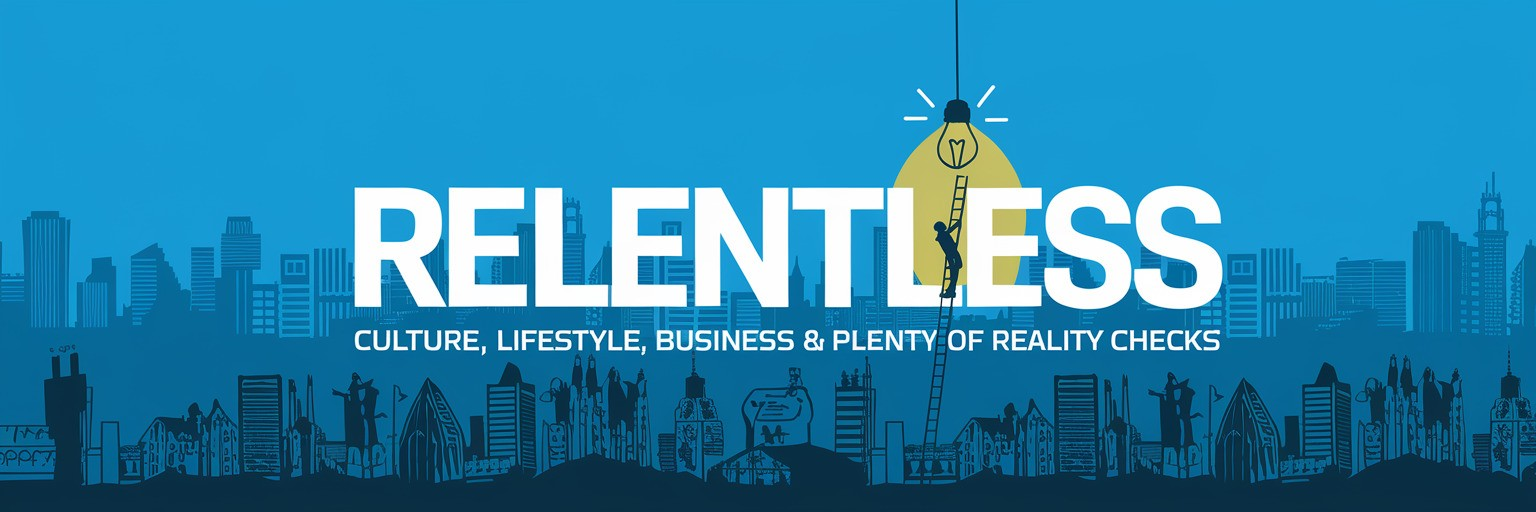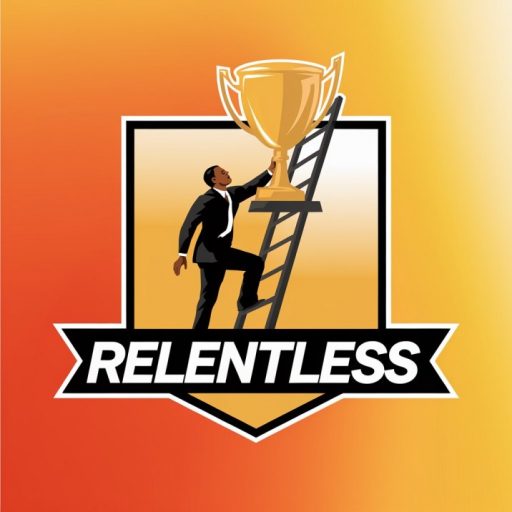TURNING SETBACKS INTO SUCCESS
12 min read #2,951 words
Discover how turning setbacks into success is possible with real stories, goal-setting, and resilience strategies.
Photo by Relentless
Understanding Setbacks
Navigating setbacks is a crucial aspect of turning challenges into successes. By understanding the reasons why we resist change and adopting effective techniques to overcome this resistance, we can position ourselves for greater resilience and adaptability.
Reasons for Resistance to Change
John Kotter and Leonard Schlesinger identify four fundamental reasons why individuals and organizations resist change
- Fear of Losing Something Valuable: We often resist change because of concerns about losing something we value—be it status, comfort, or resources.
- Misunderstanding or Miscommunication: Sometimes, resistance arises from a lack of understanding or misinformation about the change and its potential benefits.
- Belief That Change Isn’t Sensible: When we believe that a change does not align with our goals or the organization’s vision, it is natural to push back against it.
- Low Tolerance for Change: Change can be difficult due to low adaptability or comfort with the status quo, making it hard to embrace new directions.
Techniques to Overcome Resistance
Addressing and overcoming resistance involves employing strategic techniques, as suggested by experts:
- Education and Communication:
- Clear, transparent information helps demystify the change and its benefits. This can reduce fear and build trust.
- Participation and Involvement:
- Involving those affected by the change in the planning and implementation process can foster a sense of ownership and reduce resistance.
- Facilitation and Support:
- Providing resources, emotional support, and training can ease the transition and address concerns related to skill gaps or inconveniences.
- Negotiation and Agreement:
- Sometimes, negotiating terms and finding mutually beneficial agreements can mitigate resistance and promote cooperation.
- Manipulation and Co-optation:
- Though less ideal, subtly influencing or co-opting key stakeholders can help garner support. This needs to be done ethically to avoid backlash.
- Explicit and Implicit Coercion:
- In extreme circumstances, applying pressure or making adherence to change mandatory might be necessary. This should be a last resort due to potential negative impacts on morale.
| Technique | Description |
|---|---|
| Education and Communication | Providing clear information to reduce fear and build trust. |
| Participation and Involvement | Engaging stakeholders in the change process to foster ownership. |
| Facilitation and Support | Offering resources and support to ease the transition. |
| Negotiation and Agreement | Finding mutually beneficial terms to encourage cooperation. |
| Manipulation and Co-optation | Subtly influencing key stakeholders to gain support, while maintaining ethics. |
| Explicit and Implicit Coercion | Applying mandatory pressure for change in extreme situations, with caution to avoid harming morale. |
By understanding and addressing these reasons and employing effective techniques, we can navigate setbacks and transform them into opportunities for growth. For further reading on how to build resilience and adapt to change, visit our articles on resilience in the workplace and coping mechanisms for challenges.

Stories of Success After Setbacks
Milton Hershey
Milton Hershey’s journey to success was marked by numerous failures. Before perfecting the art of making milk chocolate, Hershey faced several business failures with his candy ventures. Despite these setbacks, his determination led to the creation of the iconic Hershey Chocolate (Entrepreneur). Hershey’s story illustrates the importance of persistence and innovation in turning setbacks into triumphs. For more on how to overcome setbacks and failures, explore our related content.
Thomas Edison
Thomas Edison is renowned for his invention of the functional light bulb, but this achievement came after several thousand failed attempts. Edison famously remarked, “I have not failed. I’ve just found 10,000 ways that won’t work”. His resilience and unwavering dedication serve as a powerful example of building psychological resilience and innovation in the face of adversity.
Michael Jordan
Michael Jordan’s early basketball career was fraught with challenges. Many coaches overlooked him due to his height, and he faced numerous rejections. However, Jordan’s perseverance and relentless work ethic propelled him to NBA Hall of Fame status. Jordan’s journey underscores the significance of resilience in the face of adversity and illustrates how setbacks can fuel a path to greatness.
Walt Disney
Walt Disney experienced multiple setbacks before founding the Disney empire. He was fired by a newspaper editor for lacking creativity, had early Mickey Mouse cartoons rejected, and faced criticism for projects like “The Three Little Pigs”. Disney’s ability to transform criticism into motivation exemplifies how embracing change and uncertainty can lead to monumental success.
Kris Carr
Kris Carr’s life changed dramatically when she was diagnosed with a rare form of cancer. Instead of succumbing to despair, Carr embarked on a journey of self-discovery and healing, becoming a successful author and health coach. Her story is a testament to the power of navigating challenges with resilience and transforming personal hardships into a platform for inspiring others.
By learning from these examples, we can understand that turning setbacks into success often involves resilience, innovation, and the ability to see opportunities where others see obstacles. Explore more strategies on overcoming obstacles with resilience.
Goal-Setting for Success
Setting goals is a fundamental step in turning setbacks into success. With clear objectives, we can navigate through challenges and stay focused on our desired outcomes.
Importance of Setting Goals
According to the Goal-Setting Theory, setting specific, challenging goals leads to increased performance, persistence, and motivation. Individuals who set specific and challenging objectives are more likely to achieve better results compared to those with vague or easy goals. This is particularly important for entrepreneurs and business owners who have faced setbacks, as well as individuals undergoing personal or professional transitions.
| Goal Type | Impact on Performance |
|---|---|
| Specific and Challenging | High |
| Vague or Easy | Low |
SMART Goals for Achievement
One effective way to set goals is by using the SMART criteria:
- Specific: Clearly defined and detailed goals.
- Measurable: Goals that can be quantified.
- Achievable: Realistic objectives within reach.
- Relevant: Goals aligned with overall ambitions.
- Time-bound: Goals with a set deadline.
Setting SMART goals increases the likelihood of success, as they provide a clear roadmap to follow. An example of a SMART goal for someone recovering from a career setback might be: “To apply for ten relevant job positions within the next two weeks.”
The Power of Writing Down Goals
Writing down goals significantly boosts commitment and achievement. Studies have shown that individuals who write down their objectives are more likely to accomplish them compared to those who only formulate them mentally.
Creating a written record of our goals helps:
- Clarify Intentions: Writing down specifics solidifies our intentions.
- Track Progress: Regularly reviewing our written goals allows us to monitor progress.
- Increase Accountability: A written commitment encourages us to hold ourselves accountable.
We can turn our setbacks into success by setting meaningful goals and actively pursuing them. To further enhance our resilience, explore our articles on staying resilient and focused and overcoming adversity with resilience. Writing down our goals is more than a motivational technique—it’s a powerful step toward building a resilient and thriving future. For additional tips, check out our guide on tools for building resilience.
By setting and achieving our goals, we gain control over our journey, making it easier to navigate through life’s ups and downs.
Navigating Career Setbacks
Career setbacks are inevitable, but they can also be transformative, pushing us toward finding even better career paths. Let’s explore the impact of these setbacks, strategies for overcoming them, and how we can build resilience and recovery plans.
Impact of Career Setbacks
Career setbacks can take various forms, such as losing a job, failing to get a desired promotion, experiencing project failures, or receiving a job offer with less compensation than expected. These setbacks can lead to emotional impacts, including sadness, frustration, and changes in motivation and attitude at work. However, they also present opportunities for growth and redirection in one’s career.
| Career Setback | Emotional Impact |
|---|---|
| Job Loss | Sadness, Frustration |
| Missed Promotion | Demotivation, Disappointment |
| Project Failures | Low Confidence, Uncertainty |
| Lower Compensation Job Offer | Frustration, Self-doubt |
Strategies for Overcoming Setbacks
Developing a resilient mindset and formulating a recovery plan with realistic goals are essential strategies for overcoming career setbacks. Here are some practical approaches:
- Stay Adaptable: Embrace change and uncertainty. Flexibility can help us navigate through challenges effectively.
- Seek Support: Connect with mentors or career coaches who can provide guidance and encouragement.
- Upskill or Reskill: Investing in continuous learning and acquiring new skills can open up new opportunities.
- Personal Branding: Showcase your skills and strengths through professional rebranding.
- Set Small Goals: Achieving small, incremental goals can help maintain momentum and motivation during the recovery process.
Resilience and Recovery Planning
Building resilience and creating a comprehensive recovery plan are vital steps in navigating career setbacks. Here’s how we can develop a robust plan:
- Reflect and Learn: Pause to reflect on the setback, understand the lessons learned, and use them for future success.
- Embrace Support Networks: Lean on professional networks, friends, and family for support.
- Practice Self-care: Taking care of our physical and mental well-being is crucial in maintaining a resilient mindset.
- Balance Long-term Planning with Adaptability: While setting long-term career goals, remain adaptable and open to new opportunities.
For more tips on how to bounce back effectively, visit our article on how to bounce back from failure.
To further explore how to maintain resilience, check out our resources on resilience in the workplace and resilience in the face of adversity. By incorporating these strategies and maintaining a resilient attitude, we can successfully navigate through career setbacks and turn them into opportunities for growth.
Turning Setbacks into Opportunities
Experiencing setbacks is an inevitable part of life, but how we respond to them can make all the difference. Let’s explore how we can transform setbacks into opportunities for growth and success.
Embracing Setbacks
Setbacks in life can be used as stepping stones for future success. By embracing setbacks, we shift our perspective to view them as valuable learning experiences. This mindset allows us to approach obstacles with a sense of curiosity and resilience.
By choosing to embrace setbacks, we open ourselves up to new possibilities and opportunities that we might not have considered. This positive outlook can also foster creativity and innovation, helping us find unique solutions to challenges.
Grieving and Learning from Setbacks
It’s important to allow ourselves to grieve when we encounter setbacks. Validating our emotions and experiences can provide a crucial foundation for healing and growth. Once we have processed these feelings, we can begin to analyze the setback to extract valuable lessons.
By examining what went wrong and why, we can identify areas for improvement and develop strategies to prevent similar issues in the future. This process of reflection and learning is essential for personal and professional growth.
| Stage | Action |
|---|---|
| Acknowledge | Recognize the setback and its impact. |
| Process | Allow time to grieve and understand your emotions. |
| Reflect | Analyze the situation to identify lessons learned. |
| Plan | Develop strategies for future improvement. |
Setbacks as Platforms for Success
Successful individuals often use setbacks as platforms for future success. For example, Walt Disney, Michael Jordan, and Oprah Winfrey faced numerous rejections and failures before achieving their dreams. These experiences provided them with the resilience and determination needed to persevere.
Carol Dweck’s research on the growth mindset highlights the importance of viewing setbacks as opportunities for growth. By pushing ourselves out of our comfort zones and tackling challenging tasks, we can develop stronger brain connections and increase our intelligence over time.
Here are some steps to turn setbacks into platforms for success:
- Reframe: Change your perspective to view the setback as an opportunity.
- Learn: Extract lessons from the experience to improve future performance.
- Act: Implement changes based on what you’ve learned.
- Persist: Continue to push forward with determination and resilience.
For more insights on how to navigate setbacks effectively, visit our article on overcoming setbacks and failures and cultivate a resilient mindset by exploring developing emotional resilience.
By embracing setbacks, allowing ourselves to grieve, and viewing them as platforms for success, we can transform challenges into opportunities for growth. This approach empowers us to face future obstacles with confidence and resilience, ultimately leading us to greater heights. For additional strategies on building resilience, check out our resources on tools for building resilience and coping with unexpected changes.
Developing a Growth Mindset
Developing a growth mindset is essential when navigating setbacks and aiming for success. A growth mindset encourages us to view challenges as opportunities for growth rather than insurmountable obstacles.
Growth Mindset Overview
A growth mindset is the belief that our abilities and intelligence can grow with effort, learning, and persistence. When we embrace this mindset, we are more likely to persevere through difficulties and setbacks. Instead of thinking “I can’t do this,” we start thinking “I can’t do this yet,” opening the door to future success.
Importance of Persistence
Persistence is a key component of a growth mindset. By continually pushing ourselves out of our comfort zones, we can develop stronger connections in our brains and improve our performance over time. This concept has been shown to lead to significant improvements in grades and performance for thousands of students. As entrepreneurs and business owners, persistence can be our ally in facing financial and operational challenges. Even when setbacks arise, maintaining a resilient attitude and dedicating ourselves to overcoming obstacles can transform our setbacks into success. For more strategies on resilience, check out our article on strategies for staying resilient.
Praise for Effort and Improvement
How we praise ourselves and others can significantly impact our mindset. Praising aspects like effort, strategies, focus, perseverance, and improvement, rather than inherent intelligence or talent, fosters resilience and adaptability. By focusing on the journey and acknowledging the hard work put into facing challenges, we build a solid foundation for continuous growth.
| Aspect of Praise | Effect on Mindset |
|---|---|
| Effort | Encourages continuous striving and hard work |
| Strategies | Promotes innovative and adaptive thinking |
| Focus | Enhances sustained attention to tasks |
| Perseverance | Builds resilience against failure |
| Improvement | Reinforces progress and growth |
Adopting this approach can help us better navigate setbacks and failures in our personal and professional lives. It also teaches us to embrace the process of learning and growth, rather than focusing solely on the end result.
For more insights on turning setbacks into opportunities, explore our resources on transforming setbacks into opportunities and embracing change and uncertainty. By consistently applying these principles, we can build a resilient mindset that empowers us to pivot and thrive, even amidst life’s ups and downs.






